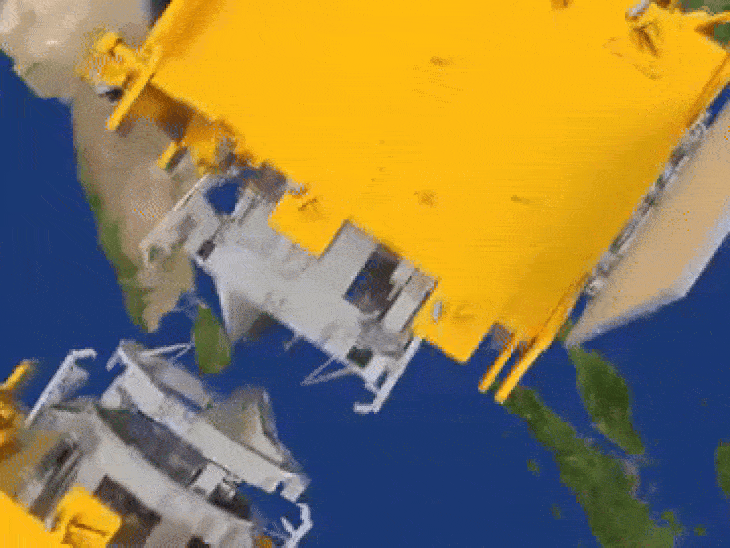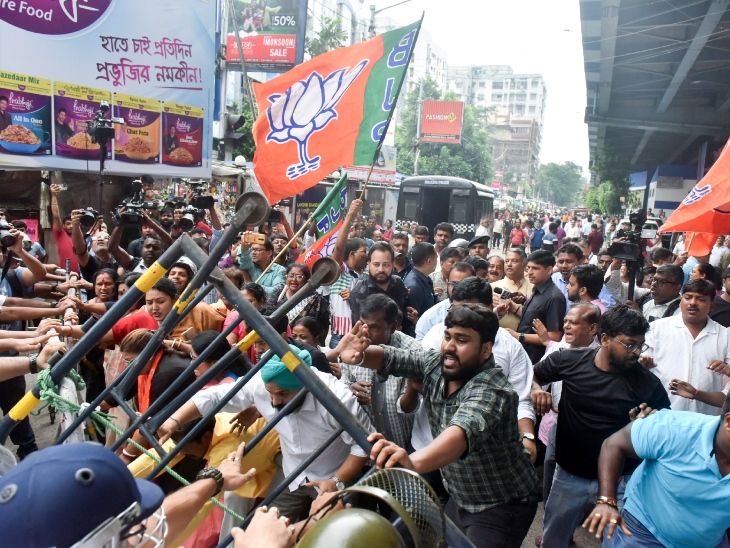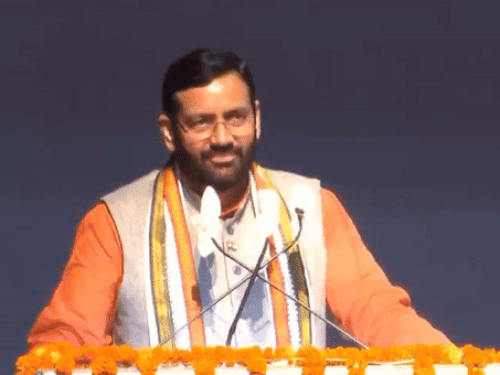New Delhi23 minutes ago
- Copy link

On January 16, the first docking of satellites took place at 6:20 am. Then on 13 March, it was successfully blown at 9:20 am.
ISRO has done successful docking of two satellites in space for the second time. Union Minister Jitendra Singh gave this information through X post on Monday. He told that now after the success of Docking again, more scientific experiments will be done in the coming two weeks.
The Union Minister said- This mission has emerged as an important example of indigenous abilities in India’s space technology. In fact, ISRO successfully launched the PSLV-C60 / Spadex Mission on 30 December 2024.
On January 16, the first docking of satellites took place at 6:20 am. Then on 13 March, it was successfully blown at 9:20 am.

Union Minister Jitendra Singh gave information about docking on Monday through X post.
January 16: India becomes the fourth country to dock two satellites in space
India became the fourth country on 16 February to dock two spacecrafts in space. Earlier, Russia, America and China have been successful in doing so. The success of this mission depended on the success of Chandrayaan-4, Gaganyaan and Indian Space Station. Moon’s soil samples will be brought to Earth in Chandrayaan-4 mission. At the same time, humans will be sent to space in the Gaganyaan Mission.
Earlier on January 7, both satellites were to be connected to this mission, but it was postponed. Then on January 9, Docking was postponed due to technical problems. On January 12, the satellites were taken back to a safe distance after bringing the satellites close to 3 meters.
4 pictures of Mission before proceeding in the news …

PSLV-C60 rocket prepared at the launchpad before the launch of the spadex mission.

On 30 December 2024, the Spadex Mission was launched from Sriharikota at 10 pm.

ISRO deployed both the spacecraft 470 km above the Earth.

The spacecraft was docked after coming to 15 meters first to 3 meters.
After successful docking, ISRO said-

Docking of spacecraft was successfully completed! A historical moment. Let’s know the docking process: The distance between spacecrafts was brought from 15 meters to 3 meters. Docking was started with accuracy, which led to success in capturing the spacecraft. Docking was successfully completed. India became the fourth country to achieve successful space docking. Congratulations to the entire team! Congratulations to India! After docking, the control of two spacecrafts as a single object became successful. In the coming days, ignores and power transfer will be checked.

What was Spades Mission Objective: Docking and Undocking Technology Show to the world
- Showing two small spacecraft docking and ignores technology in the lower orbit of the Earth.
- Performing technology to transfer electric power between two spacecrafts.
- Space docking means adding or connecting two spacecraft into space.

Spadex Mission Process: Know how both spacecrafts come close
On December 30, two small spacecraft targets and chasers were launched in different classes at an altitude of 470 km from PSLV-C60 rocket.
After the deployment, the speed of both spacecrafts increased to around 28,800 km per hour. This speed was 10 times higher than the speed of bullet.
The direct communication was not linked between the two spacecrafts. They were guided from the ground. Both spacecroft were brought closer to each other.
The laser range finder was used when covering the distance between 5 km to 0.25 km. Docking camera was used for a range of 300 meters to 1 meter. The visual camera was used at a distance from 1 meter to 0 meters.
After successful docking, electrical power transfer between the two spacecrafts will now be shown in the coming days. Then there will be an ignorance of spacecrafts and both of them will start the operation of their respective payloads. It will continue to get valuable data from it for about two years.
Why mission is necessary: Missions like Chandrayaan-4 depended on this
- Technology will be used in the Chandrayaan-4 mission in which samples from the moon will be brought back to Earth.
- Docking technology will also be required to build space stations and then go there.
- This technology is also necessary for the Gaganyaan mission in which humans will be sent to space.
- This technology is necessary to send satellite servicing, interplanetary missions and humans to the moon.
India patented on its docking mechanism This docking mechanism has been named ‘Indian Docking System’. ISRO has also taken a patent on this docking system. India had to develop its own docking mechanism, as no space agency shares the nuances of this extremely complex process.
24 payloads for the experiment were also sent to the mission 24 payloads have also been sent to this mission for experiment in microgravity. These payloads were in the fourth stage of the PSLV rocket called POEM (PSLV Orbital Experimental Module). 14 payloads are from ISRO and 10 payloads are from non-governmental institutions (NGE).

America first docing on 16 March 1966
- The first docking of two spacecrafts in space was completed on 16 March 1966 at the Gemini VIII mission. Gemini VIII Spacecraft was docked with Azena target vehicle, which was launched the same day earlier.
- The Soviet Union (now Russia) first docked two spacecraft space on 30 October 1967. Anmand Cosmos 186 and 188 were then docked automatically. Docking was an important step of return to the Sovian Union’s flight program.
- China’s first space docking took place on November 2, 2011, when the Shanejhou 8 spacecraft without cream successfully docked with Tiangong-1 Space Lab Module. Docking took place at the Juquan Satellite Launch Center in Gansu, China.




